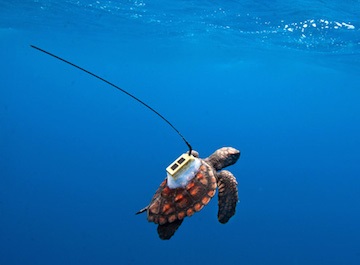370915-along for ride.jpg

Young loggerhead turtle with a solar-powered satellite transmitter. Credit: National Oceanic and Atmospheric Administration
One of the best ways for biologists to learn about marine life is to tag along for the ride -- to plunge into the ocean depths, or travel on a migration that may cover thousands of miles. Since it’s hard to know how many sandwiches to pack for such a trip, though, scientists use proxies: satellite trackers, video cameras, and other devices.
These gizmos provide invaluable information about the behavior of sharks, birds, seals, sea turtles, and many other species. They’ve revealed that some species travel thousands of miles every year, and that some appear to rely on Earth’s magnetic field for navigation. They’ve shown us how some organisms catch prey and revealed many other fascinating habits.
But scientists have to be careful about which creatures they tag, and what devices they tag them with. Researchers attached several types of tracking devices to models of sea turtles in a wind tunnel. They found that most devices had little or no effect on full-grown adults. But on juveniles, some trackers increased drag by up to 100 percent. Using models of how fluids move around objects, the researchers found similar impacts for other creatures.
The extra drag means the real creatures would have to use a lot more energy just to get around, leaving less for feeding and reproduction. Not only is that bad for the animals, but it means researchers wouldn’t be getting a true picture of how these creatures behave. That’s why scientists are careful when they go along for the ride.

